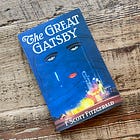Coloring Outside the Lines
Reviewing Nella Larsen’s Classic Novels ‘Quicksand’ and ‘Passing’
When Jack Bellew playfully greets his wife Clare with the nickname “Nig,” he has no clue she’s actually a black woman passing for white. He thinks she’s tan—convenient because Jack’s racism is both deep and potentially explosive.
Clare’s friends Irene and Gertrude have come to visit Clare and meet her husband, a new acquaintance for them both. They’re doubly shocked and unnerved by his greeting. First, there’s Clare’s safety: They soon realize Jack doesn’t know; how long could she possibly keep her husband ignorant of her race? Second, their own safety in that moment: Jack assumes Irene and Gertrude are also white; they’re not.
And now, whatever detestable thing this bigot might say, they cannot speak up for themselves, their friend, or their race. They’re trapped.

For Harlem Renaissance writer Nella Larsen what America’s white-majority culture made of color could serve as a prison for blacks. Her two novels Quicksand (1928) and Passing (1929), from which I’ve taken the above scene, demonstrate how.
Adrift and Homeless
In Quicksand, Helga Crane is lost to herself, alienated by her own history and daily experience. Born to a Danish mother and West Indian father, she struggles to fit in either white or black circles. The novel begins at Naxos, a fictional southern black school patterned on Fisk and Tuskegee, where Larsen actually attended and worked.
Though employed by Naxos and engaged to a fellow teacher, Helga bucks under the strictures of the school. She wants to break off her engagement and quit town. Impulsively, she does so, moving to Chicago. Unfortunately, work proves challenging to get, though she eventually lands a temporary job as a personal secretary and finds her way to Harlem.
As the story progresses, both places and people disappoint, and disenchantment awaits Helga in New York. After a romantic possibility falters, a windfall inheritance from her uncle allows her to live abroad. Little changes.
She travels to Copenhagen to stay with her mother’s Danish relatives, and while the charged racial atmosphere of America recedes, Helga still struggles to fit in. Her aunt encourages her to marry, yet when the artist Axel Olsen—who has been painting her portrait—asks for her hand, Helga refuses. Olsen objectifies her, and she realizes there could be no true relationship with him. What’s more, as a minority of one, she misses people that look like her.
Helga returns to New York where she finally suffers a breakdown and at last seems to find peace in religion and a man who rescues her. Regrettably no. Helga hopes to make her home in a place, but that doesn’t work; with men, but they disappoint; through faith, but enthusiasm fades. She comes to the end of herself and discovers there’s no way out.

Another Option?
Critics praised Larsen’s first foray into fiction, though her second novel, Passing, represents her more lasting work and remains the primary reason she’s read and remembered today. Both novels are slender and cut like a stiletto, but Passing carries a surprisingly sharp edge.
Irene hasn’t seen Clare in a dozen years, but when she reappears—passing as a white woman—it unsettles her. Irene wants nothing to do with Clare, especially after the encounter with her racist husband, but feels simultaneously drawn to her, unable to resist her pushy, presumptuous presence.
Clare soon imposes herself on Irene and her family in Harlem. Despite the risks to her marriage, she visits whenever Jack’s business travel permits. Unfortunatley, her visits risk Irene’s marriage, as Irene comes to suspect something between Clare and her own husband.
The truth of those suspicions never materializes because a chance encounter with Jack in public raises suspicions of his own. While pretending to be away, he follows Clare to a party and discovers her secret—with tragic consequences.
There has been a resurgence of interest in Larsen’s Quicksand and the autobiographical details that undergird it, but Passing remains the superior novel. Subtle and elusive, it raises issues and lets them simmer; it poses questions and denies answers.
A Great American Novel
In my reading, Passing compares favorably to The Great Gatsby. Both are concerned with identity and self-manufacture, but whereas F. Scott Fitzgerald uses class to tell his tale, Larsen uses race. Both Larsen and Fitzgerald employ first-person narration and the limits of their close, personal perspective to unspool their stories. The approach allows the interior character development of the narrators, Nick and Irene, based on the exterior observation of their friends, Gatsby and Clare.
Gatsby and Clare are in many ways the same person, though Gatsby climbs socially to pursue Daisy and Clare pursues social mobility by suffering Jack. In both cases, they’re enacting a performance, playing a character, and the stripping of their masks becomes their undoing. Anyone drawn to one story should consider the other and imagine the books in fruitful conversation.
Such a comparison also points up an unavoidable conclusion: Nella Larsen’s Passing is a great American novel.
Thanks for reading! If you enjoyed this review, please hit the ❤️ below and share it with a friend.
Not a subscriber? Take a moment and sign up. More remarkable reading is on its way. Don’t miss out!
While you’re here, check out:






I read Quicksand a couple of years back and found it absolute devastating and haunting. I have Passing and am even more excited to read it now!
Thank you for highlighting this author. I'm now keen to seek out these novels and read them for myself.